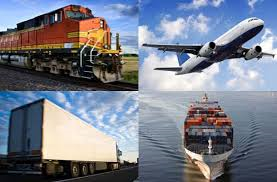Airlines, trucking and trains are three sectors of the stock market that are old-school, old-fashioned and possess none of the sex appeal of, say, the social media and technology stocks.
 A few years ago they would have been on most everyone’s list of stocks least likely to succeed. These lumbering transportation industries suffered from too much capacity, price-cutting, high fixed costs, fuel costs and, in the case of airlines, snotty flight attendants. They were pumping red like a ruptured artery with profitability only a distant dream.
A few years ago they would have been on most everyone’s list of stocks least likely to succeed. These lumbering transportation industries suffered from too much capacity, price-cutting, high fixed costs, fuel costs and, in the case of airlines, snotty flight attendants. They were pumping red like a ruptured artery with profitability only a distant dream.
Even the Great One, Warren Buffett — who only invests in stuff he understands — repudiated airline investing after his stake in USAir languished for years.
He was quoted in a 2002 interview saying: “The airline industry has eaten up capital over the past century like almost no other business.” He went on to say if ever he got the urge to buy another airline stock, someone should “talk me down.”
But over the intervening years, the previously unloved transport sector got its act together, and many companies in this sector are profitable now.
In fact, the upward trajectory of the stock charts of companies like Dallas-based Southwest Airlines Co., Old Dominion Freight Line Inc. and Union Pacific Corp. resemble those of the dot-com cyber-rockets of the late 1990s.
“All of those sectors [airlines, trucking and rail] were disasters 10 years ago,” said Don Hodges, founder of Hodges Capital Management, a Dallas investment firm. “They woke up and decided if they didn’t change, they wouldn’t be around.”
Shares of Southwest Airlines are up by 100 percent over the past 12 months. Old Dominion, a trucking company, is up almost 60 percent. And Union Pacific, the railroad company, has seen its share price soar 30 percent.
The Dow Jones transportation average, which is made up of 20 transportation companies, is also up about 30 percent over the past year. So far this year, the transport index is up 10 percent, which is far better than the 4 percent return of the much broader Standard & Poor’s 500 index.
Transport stocks generally offer a window into the overall health of the economy, but more is going on with these sectors than simply an improving economy.
Bankruptcies and mergers over the past decade have reduced competitive pressures and allowed them to cut costs and even given them some pricing power, according to Robert Sweet, managing editor of Dow Theory Forecast. For example, since the early 2000s some 10 major airlines have been reduced to four mega-carriers.
Sweet currently likes Alaska Air Group, but said the entire sector has “finally figured it out.” Previously, airlines were flying too many planes with low occupancy, and they were undercutting each other on price. But over the past two to three years they have cleaned up this mess, he said.
In addition to the mergers, lower jet fuel prices help to power airline profitability, he said. Shares of Delta Air Lines Inc. are up 46 percent so far this year, while American Airlines Group Inc. spiked 60 percent.
Profit growth in the trucking industry has been improving for the same reason it has for airlines — it has reduced capacity. The American Trucking Association estimates that there are 8 percent fewer trucks operating today than before the 2008 recession. Merger activity increased 57 percent in 2013 over the previous year, according to a PricewaterhouseCoopers report.
Two of the biggest names in this space are Old Dominion Freight Lines and J.B. Hunt Transport Services Inc. Old Dominion, based in Thomasville, N.C., reported first-quarter earnings 13 percent above the same period a year ago, and analysts are projecting earnings per share growth of 19 percent this year.
Old Dominion’s stock price is up 46 percent over the past year. Shares of J.B. Hunt have been stuck in a trading range of $70 to $77 for the better part of a year, but they had a nice upward spike of 30 percent early last year.
Both trucking and rails are benefiting from the increased use of hydraulic fracturing of shale oil fields, which has brought a boom in oil and natural gas production. This has increased demand for both trucks and railcars.
Union Pacific is now pumping out about $22 billion a year in revenue, and its earnings rose from $3.9 billion in 2012 to $4.4 billion in 2013 — an 11 percent growth in profit. And it consistently churns out double-digit profit growth.
“Railroad stocks were terrible for 25 years, but now I would call them a growth sector,” Hodges said. “There are only five major railroads now, so they have pricing power.”
Despite the big moves in their stock prices, most of the companies in the transport sector still sport modest price-to-earnings ratios in the 10 to 12 range. That’s a plus for investors considering buying into these sectors.
And perhaps the best news of all is that as long as transports are humming along, the economy should, too.
Source: Dallas News Will Deener
Daily Specials
Chevy Parts








